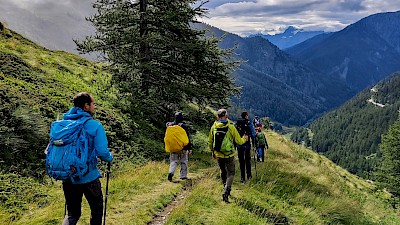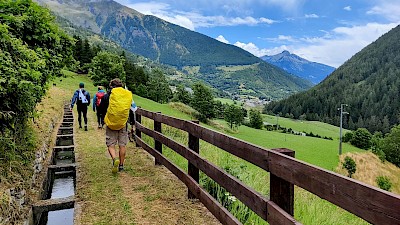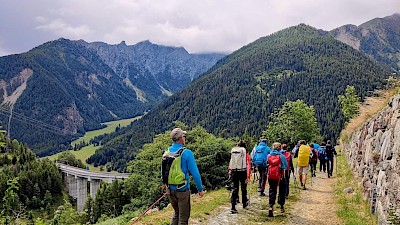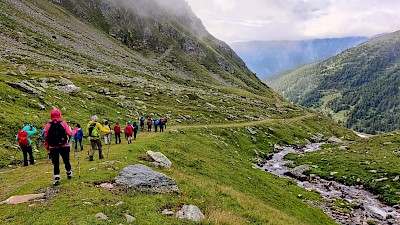

Via Francigena
From Canterbury to Rome
Among mountain trails, dirt roads, and ancient villages, the Via Francigena is a route suitable for everyone, retracing the historical itinerary of pilgrims who journeyed from Northern Europe to Rome to visit the tomb of Saint Peter and then to the port of Brindisi, where they embarked for the Holy Land.
The Aosta Valley is located halfway along this journey and can be crossed in 5 stages of about 20 kilometers per day, with stops at accommodation facilities along the way. In the Aosta Valley section, the first stage begins at the Great St. Bernard Pass at an altitude of 2,450 meters. It then proceeds through Saint-Rhémy-en-Bosses and Saint-Oyen, reaching Étroubles, where the first stop is planned before continuing to Aosta.
Step by step, let yourself be enchanted by the magnificent landscapes along the path: majestic mountains, ancient villages with cobbled streets and historical monuments, fountains gushing with pure spring water, and more. You can download maps and information for all the itineraries from the website of the European Association of the Via Francigena.
The history of the route
In addition to being a pilgrimage route, this path was also a European business route, connecting the financial centers of the Po Valley and Tuscany to the merchant cities of Champagne and Flanders. For this reason, the itinerary was always kept efficient, allowing the passage of soldiers, goods, and travelers through the centuries.
The first description of the route dates back to the 10th century when Archbishop Sigeric, traveling from Canterbury to Rome in 990 AD, described the 79 stages of his journey on his way back. Before and after him, armies, Savoyard kings, and even Napoleon's powerful army passed through during his victorious campaign in Italy in May 1800.
Due to the harshness of the terrain and the high altitudes, several hospices were built along the Aosta Valley section to refresh the numerous travelers.
The Great St. Bernard Hospice was the oldest and most famous one. Located on the Great St. Bernard Pass, it still hosts the canons of Mont Joux who have been providing "bed, bread, and fire" to millions of travelers for centuries.
Descending towards Aosta, pilgrims also encountered the hospital of "Fonteintes," founded around 1250 by the lords of Bosses, the hospice of Saint-Rhémy, where Archbishop Sigeric stayed, and the famous fortified house of Château Verdun in Saint-Oyen.
The village of Etroubles also had its hospice, which remained in operation until the 18th century. On the site where it stood, the house of Abbé Veysendaz was later built, where Napoleon spent the night of May 20, 1800.
Some of these historical hospices continue their traditional hospitality, and over time, numerous accommodation facilities have also been established along the Via Francigena.
Route maps: www.viefrancigene.org
Images by AEVF - RoadtoRome








